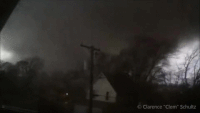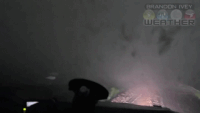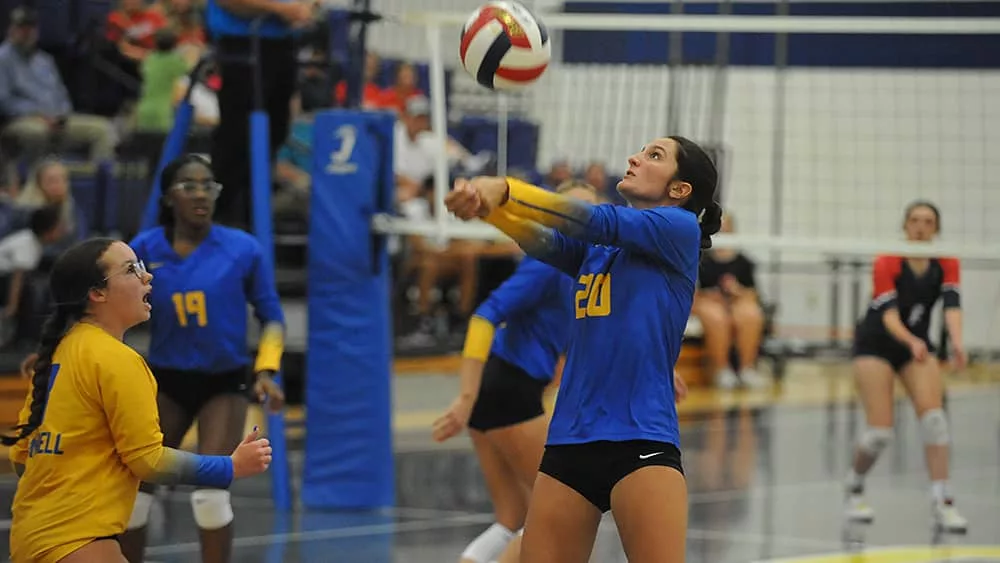
There is probably nothing more frightening than being awakened in the middle of the night by a fierce storm raging outside. Those caught by surprise will have little time to react and, unfortunately, many won’t survive. Kentucky is number 3 in the nation for nighttime tornado deaths and only one percentage point behind Arkansas, which is number 2. Tennessee ranks as number one in the U.S. for nighttime tornado deaths.

A recent study found nighttime tornado fatalities are an increasing problem. This is particularly the case in our region of Kentucky and Tennessee, both in spring and fall. Perhaps the only thing more frightening than a tornado is one that strikes while you’re asleep. Tornadoes occurring at night are twice as deadly as those during the day, according to a recent study. Examining roughly 48,000 tornadoes in the U.S. from 1950 to 2005, a 2008 study led by Walker Ashley from Northern Illinois University found roughly one in every 20 overnight tornadoes were killers, compared to roughly one in every 50 daytime deadly tornadoes.
Making up only about 27 percent of all tornadoes, these nocturnal events comprised 39 percent of tornado deaths and 42 percent of killer tornadoes in that 55-year period. So why are there more nighttime deaths? Some reasons for this are more obvious. Unless lit by at least somewhat frequent lightning, you may not see a tornado at night.

One challenge the meteorological and social science communities face is getting the public to take shelter immediately, without first “confirming the threat” of a tornado by looking outside, wasting precious seconds to reach shelter. That is what lead to at least a few deaths in Joplin, Mo in 2011. Of course, you may not be awake at the time. “Another problem is that people are often asleep and caught unaware,” said The Weather Channel severe weather expert and my friend, Dr Greg Forbes.
If you’re a sound sleeper and don’t have a way to receive warnings overnight, the consequences could be deadly. Where we are at night is another factor. “People are usually at home, often in structures that are not as sturdy as their place of work. Mobile homes are particularly vulnerable,” said Forbes. A disconcerting finding in the study is that for many of the most tornadic states in the U.S., a sizable number of tornadoes occur at night.

One-third to just under one-half of all tornadoes in 11 states from Oklahoma to West Virginia in 1950 to 2005 touched down at night, according to the study. Also the South has some of the highest numbers of mobile homes in the nation. Furthermore, 61 percent of tornado fatalities in mobile homes occur at night. All three fatalities in the November 29-30, 2016 overnight tornado in Rosalie, Alabama, were in a mobile home. Add population growth in the South, primarily in large cities and their suburbs, and you can understand the overall increasing vulnerability of this region to these events.
Unlike other parts of the country enduring harsh winter cold that eliminates the instability needed, tornadoes can be a concern any time of year in parts of the South.

Thus, given the fewer hours of daylight, any cold-season southern tornadoes have a greater chance of occurring after sunset. Even the core winter months of December through February have averaged 3 to 6 nocturnal tornadoes in the U.S. each month from 1953 through 2015, according to NOAA’s Storm Prediction Center. There’s also a pronounced nighttime tornado maximum in November, coinciding with the often-discussed “second season” for severe weather targeting the Deep South.
These colder month tornadoes often occur with a very strong jet stream, meaning winds aloft can move the parent supercells or squall lines in which these tornadoes are embedded at speeds of 60 mph or more, giving little time to seek shelter. “There have been many infamous nocturnal tornadoes,” said Forbes.

“One struck Evansville, Indiana, on Nov. 6, 2005. Nearly all of the fatalities were in mobile homes. Deadly nocturnal tornadoes struck Florida on Feb. 23, 1998, and Feb. 2, 2007.”
How can you be warned if you’re sound asleep? Here are some tips:
- Buy a NOAA weather radio. You can find these at most electronics retailers. They feature warning alarms that can be set to sound loudly when any National Weather Service tornado or severe thunderstorm watch or warning is issued.
- Your smartphone can alert you. Most newer smartphones are capable of receiving wireless emergency alerts from your local NWS office. These include tornado warnings. Make sure your smartphone is charged sufficiently and left on overnight, and a special tone and vibration will occur twice when a tornado warning is issued. Note, however, this will not sound for a tornado watch or severe thunderstorm warning.
- Other weather apps can also alert you. Many weather apps, including the WKDZ Weather app, can also send alerts to your smartphone, tablet, or smartwatch.
- Know where to go. “Be sure you know your safe location ahead of time so you can get there quickly, even if you have to get there in the middle of the night,” says Forbes. “Keep flashlights handy.”
In general, your awareness of the threat for overnight severe weather, before you go to sleep, is very important. We’re not seeing a forecasting problem but rather a communication breakdown. Scientists, along with emergency managers and people living in tornado-prone areas, must work together to solve this problem. Right now, the best alert option during this overnight period is a weather radio. Will you be ready when the time comes?





